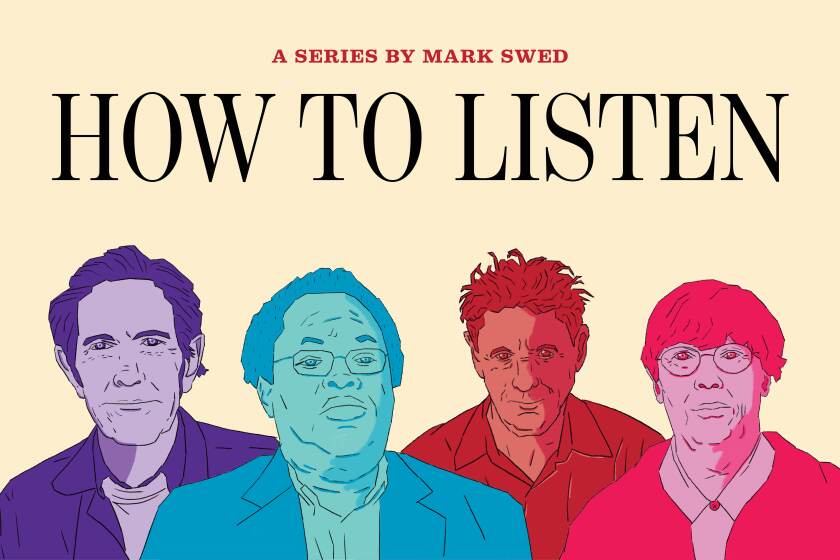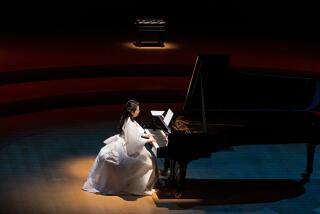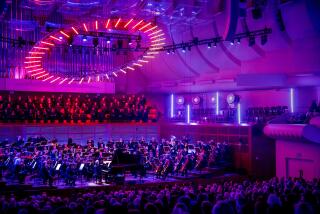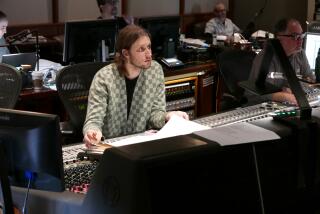Most heavenly holiday music: Messiaen and Christmas in 20 virtuosic piano visions

Paris was not burning in August 1944, but the threat was very real. With the French public at the breaking point after more than four years under Nazi rule, the resistance in open rebellion and American troops on the way, Hitler commanded that the city be razed, and explosives were being set at famed monuments.
Where was composer Olivier Messiaen, and what was he thinking? He was holed up in his apartment with his wife and young son, finishing his longest and most audacious work up to that time. The city was hot and dangerous. There were food shortages. His thoughts, however, were exalted: predestination, Godâs all-commanding word, Jesusâ living and suffering among us, Christmas with its angels, magi and shepherds.
Awe but also love, divine and possibly illicit, pervades âVingt Regards sur lâEnfant-JĂŠsus,â often translated as âTwenty Gazes Upon the Child Jesusâ but also as âTwenty Wonderments.â Messiaen turned his gaze on Yvonne Loriod. He dedicated this magnificent but nearly unplayable epic to his adoring student, a young pianist who possessed an almost supernatural technique. (Messiaen was big on all things supernatural.) The smitten composer would marry her several years later, after his wifeâs death.
Whatever drove Messiaen, it was a powerful enough spiritual, personal and musical mission to prevent distraction. Amid Parisâ machine-gun fire, he heard birds singing. Broken windows in bombed-out buildings might have been stained-glass windows. Ashen Paris was for him illuminated by rainbows. The somber rhythm of daily life was not for a composer who exulted in the rhythms of ragas he discovered in a book on Indian music. War had silenced the bells of Notre-Dame, but Messiaen never stopped hearing them.
He began âVingt Regardsâ during occupation desperation in March. D-day was June 6; liberation, Aug. 25. Two weeks later he finished the mammoth score, which lasts more than two hours. It is an agent of angels and Eros bursting at the seams. Employed are music-changing avant-garde techniques, many newly invented by the composer, put to the service of unwavering devotion and leading to an unheard-of combination of naivete, nativitĂŠ and cosmopolitanism, of academic formalism and downright sentimentality.
The 21-year-old Loriod gave the premiere the following March. The religiosity didnât go over so well. A review in Le Figaro likened the composer to âa lunatic curator of a vanished museumâ and concluded: âIs this heaven? No, itâs purgatory.â
Itâs heaven. âVingt Regardsâ doesnât so much express wonder as it startles one into a state of wonder. Nor does it need beseech belief. I first met Messiaen, who died in 1992, at a reception after a concert of his music in Pasadena. I was a music student and asked him something technical. He responded with a question no other composer has ever asked me: âAre you a believer?â I told him, yes, in his music. âThen you are a believer,â he replied with a warm handshake and moved on to the next fan.
âVingt Regardsâ isnât exactly a seasonal score, however central the Nativity is to it. And if rarely heard this time of year, it has a special message for our coronavirus-surging Christmas, our own fraught end-of-war incident. For us, art in the time of war on a virus has thus far shown admirable practicality. We make do with what we have. We accept limitations. We turn inward, tempted by immediate feelings. Loneliness and sorrows are best overcome by the revelations of unexpected simple pleasures.
French soldier Messiaen had done something similar in 1941 as a prisoner of war. He wrote what became his most famous piece, âQuartet for the End of Time,â for the instruments and players at hand in the prison camp. He was soon released and allowed to resume his teaching and composing activities in Paris. War, however, heightened Messiaenâs emotional and devotional extravagance. In short order he wrote a trio of works.
The resplendent âVisions de lâAmenâ for two profusely resounding pianos was followed by a luxuriant space-age vision of the beyond in his choral âTrois Petites Liturgies de la PrĂŠsence Divine.â The concluding fire-and-brimstone fireworks of âVingt Regardsâ transmogrify that turmoil of liberation into a transcendental visitation of bliss in the mystic beyond. To do so, a musical general commandeers the keyboard. It was not to sound like a carillon but become one. It was not to evoke God but to reveal God in the manner of his operation. For that, the composer needed everything musically imaginable and more.
Coronavirus may have silenced our symphony halls, taking away the essential communal experience of the concert as we know it, but The Times invites you to join us on a different kind of shared journey: a new series on listening.
The score comes with a long theological preface and effusive descriptions of the unutterable in each gaze. When Messiaen glances at time, rhythmic canons move with the mysterious complexity of relativity. When he glances at angels, they are so powerful that the piano turns into annunciating trombones and all particles in the atmosphere violently tremble.
A silent gaze, like white light being all colors, divulges all things in polyrhythms and polytonality. A divine kiss is a gaudy Hollywood smacker on the mouth, rapt and Technicolor. When Messiaen wants a passage played with enthusiasm he writes in the score enthusiasm haletant, gasping enthusiasm. There is no understatement in âVingt Regards.â The final gaze of the Church of Love approaches the essence of glorification on so breathtaking a scale that it makes the ending of a Bruckner symphony seem almost puny in comparison. But there are also gazes of adoration, lullabies of exquisite tenderness.
On a structural level, âVingt Regardsâ is its own edifice of wonder. It can be divided into four sections of five gazes each, with the Theme of God, a distinctive pattern of chords in three short beats and two long ones, beginning and ending each section. There are further musical themes for love and joy. A distinctive sequence of chords reappears regularly.
But the transformations are such that God is everywhere, love is everywhere. Gazes are but different guises of the divine. Notes repeat ecstatically. Fugues are impossible to follow. Indian rhythmic patterns offer new complexities. Birdsong comes out of nowhere and makes us instinctually look up. It is almost as if God made the world using a keyboard as his tool.
While Messiaen was writing âVingt Regards,â he had an exceptionally angry teenage genius in his class at the Conservatoire de Paris. From the start, Messiaen predicted Pierre Boulez would become the greatest French composer of his generation. Messiaen would soon welcome into his class Karlheinz Stockhausen, Iannis Xenakis and other students who became the leaders of the European avant-garde. None of them followed in their teacherâs footsteps (no one could), but they received the essential knowledge of how to go about their own business from the composer of âVingt Regardsâ and how he invented music to suit his uncompromising needs.
Moreover, they had Messiaenâs blessing. The most unwaveringly devout great composer of the doubting 20th century was also, counterintuitively, one of the most ecumenical. Jewish Argentine jazz pianist Lalo Schifrin, who had studied piano as a boy in Buenos Aires with Daniel Barenboimâs father and went on to become one of Hollywoodâs most celebrated film and TV composers, also took Messiaenâs class in Paris in the early 1950s.
I once asked Schifrin in an interview what that class led to, and he dismissed my astonishment when he told me that the techniques he learned from Messiaen were of great use when Schifrin became an arranger for Xavier Cugatâs popular Latin band. Messiaenâs musical blessings have proved, like the divinity he evoked and the holiday spirit we need more than ever, immeasurable.
Starting point
The first full recording of Messiaenâs âVingt Regardsâ is by Yvonne Loriod in 1956 with the beaming composer standing over her shoulder. It is a gracious performance that is surprisingly calm and collected. Look for it on YouTube.
In 1973, Peter Serkin recorded âVingt Regardsâ with a regard for both its universal spirituality and its prodigiously advanced technical accomplishments. It won over the hippie generation and proved a revelation to the composer.
Another 26 years later, âVingt Regardsâ received a spectacular Decca recording by Pierre-Laurent Aimard.
There have been many others, including John Ogdonâs Decca recording, a dogged effort to grab you by the lapels and not let go. Excerpts have found their way into recordings, and the latest is special. Itâs by young pianist Karin Kei Nagano, daughter of the conductor closest to Messiaen, Kent Nagano, and niece of Momo Kodama, who made a splendid recording of âVingt Regardsâ five years ago. Karin Kei Naganoâs âReincarnationâ follows a glowing performance of Schubertâs B-flat Piano Sonata with an equally glowing movement from âVingt Regardsâ that wonderfully fits the elevated mood.
With live concerts on hold, critic Mark Swed is suggesting recorded music by a different composer every Wednesday. You can find the series archive at latimes.com/howtolisten, and you can support Markâs work with a digital subscription.
More to Read
The biggest entertainment stories
Get our big stories about Hollywood, film, television, music, arts, culture and more right in your inbox as soon as they publish.
You may occasionally receive promotional content from the Los Angeles Times.












